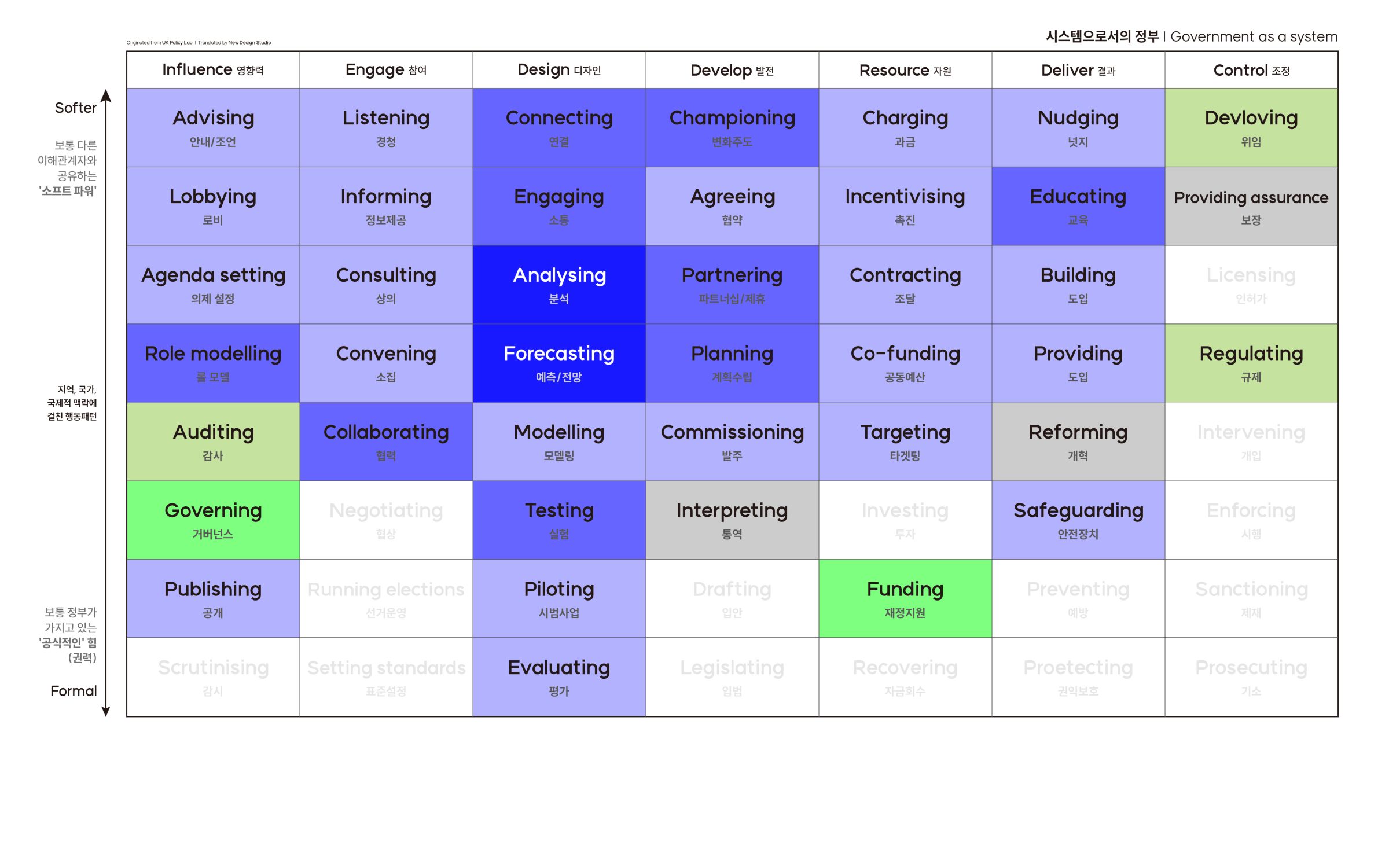
Master's Thesis
Tailoring Government as a System Toolkit for Sustainability Transition of Gwacheon National Science Museum (GNSM)
과천과학관의 지속가능한 전환을 위한 시스템으로서의 정부 툴킷 조정
As sustainability issues gain increasing global importance, the demand for efforts extends beyond gov- ernments to include art museums and cultural institutions. In Korea, museums and related organizations are striving to address these issues. However, their focus is primarily limited to operational and facility aspects, making it challenging to grasp the broader policy perspectives. The National Museum of Modern and Contemporary Art (MMCA) in Korea had a successful opportunity to engage in discussions on specific policy ideas that encompassed not only resource usage and technical solutions but also the acceptability of change and the aspirations of citizens.
This project, titled “A Carbon Neutral Art Museum through speculation with future citizens,” utilized a toolkit called “Government as a System” developed by the UK Policy Lab. The toolkit encompasses 56 government actions and aids policymakers in connecting specific policy ideas with corresponding actions. Using this toolkit, policy ideas from citizens were mapped, and MMCA played a pivotal role in this endeavor. Inspired by MMCA’s success, the Gwacheon National Science Museum (GNSM), a renowned science museum, expressed an interest in adopting a similar approach to assess the suitability of the toolkit within their own context and role.
This research, conducted as part of the GNSM project, aims to identify the key areas of focus for Gwacheon National Science Museum in Korea and determine which areas require greater attention concerning sustainability issues. The “Government as a System” toolkit serves as the primary instrument for achieving this objective. Through interviews conducted with 10 employees involved in sustainability or long-term planning, qualitative insights were obtained. These insights clarified the actions necessary for sustainability and highlighted the areas where the museum seeks to expand its role as a prominent science museum. The “Government as a System” toolkit was employed to organize and distribute these actions effectively.
The research conducted at Gwacheon National Science Museum enables the identification and prioritization of areas requiring attention for sustainability. Furthermore, similar institutions can adopt this model to assess their current status and develop future plans. Given that museums and cultural institutions are greatly influenced by higher-level governments, the establishment of policies and evaluation criteria based on this model becomes imperative for driving long-term changes.
전 세계적으로 지속가능성 이슈의 중요성이 커지면서 정부를 넘어 미술관, 문화기관까지 지속가능성을 위한 노력에 대한 요구가 커지고 있습니다. 국내에서도 박물관과 관련 기관들이 이러한 문제를 해결하기 위해 노력하고 있습니다. 하지만 주로 운영과 시설 측면에 초점을 맞추고 있어 보다 폭넓은 정책적 관점을 파악하기에는 어려움이 있습니다. 국립현대미술관은 자원 사용과 기술적 해결책뿐만 아니라 변화의 수용 가능성, 시민들의 열망까지 아우르는 구체적인 정책 아이디어를 논의할 수 있는 기회를 성공적으로 마련했습니다.
‘미래 시민과의 상상을 통한 탄소 중립 미술관’이라는 제목으로 진행된 이번 프로젝트는 영국 정책연구소에서 개발한 ‘시스템으로서의 정부’라는 툴킷을 활용했습니다. 이 툴킷은 56개의 정부가 할 수 있는 액션들을 포괄하며 정책 입안자가 특정 정책 아이디어를 해당 액션과 연결할 수 있도록 지원합니다. 이 툴킷을 사용하여 시민들의 정책 아이디어를 매핑했으며, 국립현대미술관은 이 작업에서 중추적인 역할을 담당했습니다. 국립현대미술관의 성공에 영감을 받은 대표 과학관인 국립과천과학관(Gwacheon National Science Museum; GNSM)은 각자의 상황과 역할에 맞게 툴킷의 적합성을 평가하기 위해 유사한 접근 방식을 채택하고 싶다는 의사를 밝혔습니다.
과천과학관 프로젝트의 일환으로 수행된 이 연구는 국립과천과학관의 주요 중점 분야를 파악하고 지속가능성 문제와 관련하여 더 많은 관심이 필요한 분야를 결정하는 것을 목표로 합니다. “시스템으로서의 정부” 툴킷은 이러한 목표를 달성하기 위한 주요 도구로 사용되었습니다. 지속가능성 또는 장기 계획과 관련된 10명의 직원과의 인터뷰를 통해 질적 인사이트를 얻었고, 지속 가능성을 위해 필요한 액션들을 명확히 하고, 저명한 과학 박물관으로서 기존의 역할을 확대를 강조하는 내용을 확인할 수 있었습니다. “시스템으로서의 정부” 툴킷은 이러한 통찰들을 효과적으로 한 눈에 보여주고 정책 분포를 보여주는 데 효과적이었습니다.
국립과천과학관에서 수행한 연구를 통해 지속가능성을 위해 관심과 노력이 필요한 분야를 파악하고 우선순위를 정할 수 있습니다. 또한 유사한 기관들이 이 모델을 도입하여 현재 상태를 평가하고 향후 계획을 수립하는 데에도 도움이 될 수 있습니다. 박물관과 문화기관이 상위 정부의 영향을 많이 받는다는 점을 고려할 때, 이 모델을 기반으로 한 정책과 평가 기준의 수립은 장기적인 변화를 이끌어내기 위해 필요합니다.
